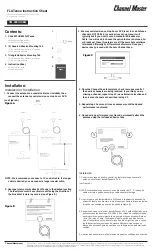NXP Semiconductors
AN11740
PN5180 Antenna design
AN11740
All information provided in this document is subject to legal disclaimers.
© NXP B.V. 2018. All rights reserved.
Application note
COMPANY PUBLIC
Rev. 1.1 — 19 June 2018
345311
27 of 62
R
Coil
= 2.8 … 3.4Ω
C
pa
= not measured, can be estimated
The inductance can be measured quite accurate, but the resistance is not very accurate
due to the relationship between R and jωL. And the capacitance is not measured at all
with this simple measurement.
There are several ways to improve the accuracy and even further derive the capacitance,
but these simple results are enough to start the tuning procedure. This tuning procedure
needs to be done anyway, so there is no real need to spend more effort in measuring the
antenna coil parameters more accurate.
4.2.1.2 Define target impedance and Q-factor
The target impedance must be defined. For the maximum power transfer, it should be
18…
20Ω (as indicated in section 4.1). In such case the driver current ITVDD gets close
to the limit of ITVDDmax = 250mA.
The impedance target might be different for different applications. An impedance target
of Rmatch = 50…80Ω might be better in battery powered devices, where the current
consumption must be minimum, while at the same time the required maximum operating
distance can be lower.
Note:
The following examples show the design for a maximum power transfer, e.g. for
an EMVCo POS design.
The quality factor Q depends on the overall system requirements and frame conditions.
The overall system requires the Q to be in a range, which allows us to meet the timing
and pulse shape requirements of the corresponding standard (ISO, NFC or EMV). These
requirements are mainly the same, but with some differences:
While ISO allows data rates of up 848 kbit/s, NFC allows the data rates of up to 424
kbit/s. EMV systems are limited to 106 kbit/s. So typically, the Q of EMV reader systems
can be higher than the Q of ISO or NFC reader systems.
The Q is an indirect value, since the measurement of the Q in the overall antenna
system, which includes the antenna driver as well as the contactless card, is complex –
and not required. The wave shape and timing measurements, as required according to
the standards, are the relevant measurements, and the corresponding Q value is not of
any importance.
Here in a first step the Q is chosen for the passive and linear antenna circuit only. So, it
can be seen as start value to calculate the damping resistors R
Q
.
Good starting values as entry for the calculation of the matching calculation are shown in
Table 1.
Table 1.
Q-factor
Values for the passive linear antenna circuit only
Q
Condition
20
Start value for the matching calculation for typical NFC Reader design.
25
Start value for the matching calculation for typical NFC Reader design,
limited to 106kbit/s.
30
Nominal value for MIFARE Classic communication.

















